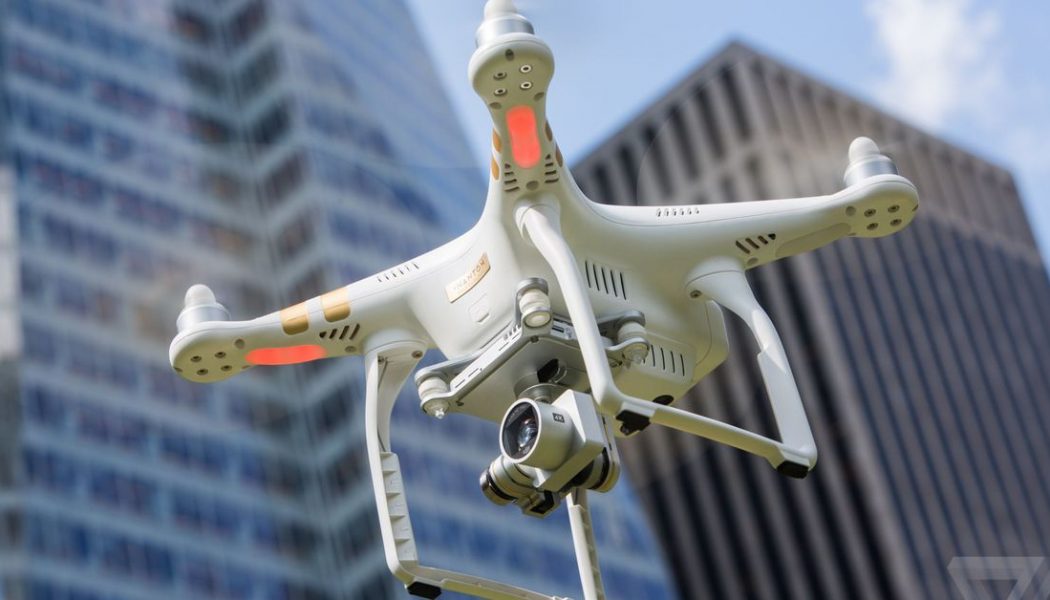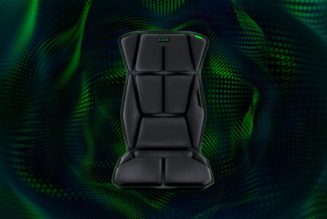
If you intend to fly a drone in the US, you’re going to want to pay attention: the Federal Aviation Administration (FAA) just issued the single biggest set of changes to US drone law since the agency first took an interest in the technology. With the proper license, you’ll soon be able to fly at night and over people. But the biggest change is this: in 2023, it may be illegal for you to fly some drones at all unless you retrofit them with their own broadcasting equipment.
In 2022, the US government will require every new mass-produced drone weighing over 0.55 pounds (0.25kg) to broadcast your location — and I do mean your location, not just the location of your drone. You’ll also be broadcasting an identification number that law enforcement can cross-reference with your registration number, as well as your drone’s speed and altitude.
It’s all part of a new “Remote ID” standard designed to give the FAA and law enforcement a handle on what’s actually flying around in the skies, and it makes sense we might want something like that, considering the current system only requires you to slap a sticker on your drone that nobody’s going to be able to see while it’s flying through the air. This way, law enforcement can theoretically figure out who’s flying any given drone dangerously and shut them down.
But the Remote ID rule doesn’t just apply to brand-new drones: in 2023; it’ll be illegal to fly your existing drones without that same broadcast. There’s no grandfathering clause for older drones, no exemption for home-built racing drones, and it doesn’t matter whether you’re flying it for fun or even just flying it indoors. You’ll either need to retrofit it with a new broadcast module or only fly it in a specially designated drone flying zone called an “FAA-Recognized Identification Area,” according to the new rules. No such areas yet exist — the FAA will be accepting applications for the new zones in 2022.
It’s also noteworthy the FAA isn’t saying precisely how or how far these drones need to broadcast their identity, largely leaving it up to manufacturers to figure out the best way to do so over the next 18 months, which is when new drones sold in the US will have to comply. “At this time, no means of compliance have been FAA-approved,” writes a spokesperson.
For a DJI-style drone that already packs plenty of technology and already connects to your smartphone, it might theoretically be as easy as sending an additional signal every so often, but it depends on what the FAA decides to approve in the end. DJI declined to comment for this story, which makes me wonder if there’s some wrinkle I’m missing.
It is worth noting that while DJI railed against the FAA’s original proposal that might have required every drone to broadcast their Remote ID over the internet, the final rules explicitly don’t require an internet connection, and suggest that manufacturers might simply use short-range Bluetooth or Wi-Fi.
Here’s self-flying drone maker Skydio’s statement: “We are reviewing the FAA’s new rule on remote identification, which comes into effect in roughly 30 months. There is no immediate impact on Skydio customers. We are working closely with the FAA and taking steps to ensure that our current and future products will be in compliance with the new framework.”
If it does prove difficult to add these broadcasts. or if people become worried about revealing their location, it could change the way drones are made and sold. Companies like DJI already try to keep some drones under the 0.55-pound weight limit so buyers don’t have to legally register them with the FAA. Now, more drones are likely to follow suit, and manufacturers of cheaper flying toys might think twice about crossing that weight limit as well. Even racing drones designed to shed as much weight as possible may now need to factor a possible Remote ID transmitter into their build.
And just because you’ve got a Remote ID transmitter doesn’t mean you can take an eye off your drone, by the way. The Visual Line of Sight rule still applies. “Persons operating a drone with a remote ID broadcast module must be able to see their drone at all times during flight,” writes an FAA spokesperson, who also confirmed to The Verge that there’s no exemption for home-built drones. “[FAA-Recognized Identification Areas] are the only locations unmanned aircraft (drones and radio-controlled model airplanes) may operate without broadcasting remote ID message elements without other authorization from the FAA,” they wrote.
If you’re a professional, licensed drone operator, there is some very intriguing and long-awaited news today alongside the Remote ID rule, though: the FAA has decided to finally allow you to fly drones over people, at night, and in some cases even over moving vehicles without applying for a special exemption.
Flying at night requires additional training and anti-collision lights “that can be seen for 3 statute miles and have a flash rate sufficient to avoid a collision.” Flying over people depends on how dangerous your drone is in terms of weight and sharp propeller blades. There are four categories of drone:
Category 1 eligible small unmanned aircraft must weigh less than 0.55, including everything on board or otherwise attached, and contain no exposed rotating parts that would lacerate human skin. No FAA-accepted Means of Compliance (MOC) or Declaration of Compliance (DOC) required.
Category 2 eligible small unmanned aircraft must not cause injury to a human being that is equivalent to or greater than the severity of injury caused by a transfer of 11 foot-pounds of kinetic energy upon impact from a rigid object, does not contain any exposed rotating parts that could lacerate human skin upon impact with a human being, and does not contain any safety defects. Requires FAA-accepted means of compliance and FAA-accepted declaration of compliance.
Category 3 eligible small unmanned aircraft must not cause injury to a human being that is equivalent to or greater than the severity of injury caused by a transfer of 25 foot-pounds of kinetic energy upon impact from a rigid object, does not contain any exposed rotating parts that could lacerate human skin upon impact with a human being, and does not contain any safety defects. Requires FAA-accepted means of compliance and FAA-accepted declaration of compliance.
Category 4 eligible small unmanned aircraft must have an airworthiness certificate issued under Part 21 of FAA regulations. Must be operated in accordance with the operating limitations specified in the approved Flight Manual or as otherwise specified by the Administrator. The operating limitations must not prohibit operations over human beings. Must have maintenance, preventive maintenance, alterations, or inspections performed in accordance with specific requirements in the final rule.
You can’t fly a small Category 1 or Category 2 drone over people unless it’s got a Remote ID transmitter, while Category 3 can’t be flown over “open-air assemblies of human beings,” only private areas where people are either under covered structures or have been warned that a drone will be flying over. Regardless, you’ll need a Part 107 permit to fly at night or over people at all, which means taking a test and getting licensed. These specific rules should go into effect in about two months.
Here’s the FAA’s executive summary (PDF) on flying over people, and the full text of the Remote ID rule (PDF) so you can read for yourself. The FAA has addressed loads of public comments and suggestions in there, so it’s worth a read if you’re wondering why they chose to go this way.










